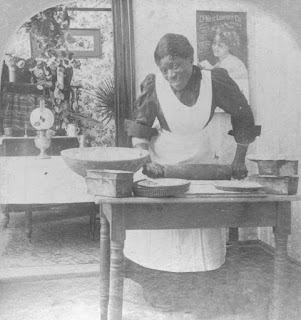By Rachel Dworkin,
Archivist
June is national
LGBTQ Pride Month. For those who aren’t familiar with the acronym, the L stands
for lesbian (women attracted to women), the G for gay (men attracted to men),
the B for bisexual (people attracted to both sexes), and the T for transsexual
(people who are a gender other than the one assigned to them at birth). The Q
stands for queer, a blanket term which helps keep the acronym from becoming too
unwieldy. Some of the identities covered under the Q include, but are not
limited to, asexual (people who don’t experience sexual attraction), pansexual
(those attracted to people regardless of their gender), intersex (people with
the physical characteristics of both sexes), and non-binary (people who don’t
identify as either gender).
Although a lot of
the terms used today are relatively new, LGBTQ people have always existed. One
of Chemung County’s most famous queer icons is pianist and composer Charles Tomlinson
Griffes (1884-1920). Born in Elmira, Griffes studied piano and organ from a
young age under the tutelage of Elmira College professor Mary Selena Broughton.
In 1903, he traveled to Berlin where he studied composition. Returning to the
United States in 1907, he took a teaching position at the Hackley School for
Boys in Tarrytown, New York, where he worked until he died of the Spanish Flu
in 1920.
 |
| Charles Tomlinson Griffes, ca. 1900 |
At the time of his
death, Griffes was considered an up-and-coming composer with a unique voice
which blended German Romanticism, French Impressionism, and Russian and
Oriental styles. He composed over 100 songs for orchestra, piano, organ,
chamber ensemble, and voice. He also wrote several pieces for stage
productions, ballets, and pantomimes. His most famous pieces include White Peacock (1915), Piano Sonata (1917–18,
revised 1919), The Pleasure Dome of Kubla Khan (1912, revised in
1916), and Poem for Flute and Orchestra (1918).
Griffes was gay. During his time in
Germany, he became romantically involved with Emil Joèl, an older fellow
student. During their years together, Joèl introduced Griffes to some of the
famous European composures of the day and even supported him financially for a
time. Due to the prejudices and laws of the day, Griffes kept his homosexuality
a secret from his family and straight friends. Whenever possible, he would
leave his lodgings in Tarrytown and head for the gay bathhouses of New York
City. From 1907 to 1919, he kept detailed diaries, often in German, describing
his experiences in New York City’s gay community. His favorite haunts were the Produce Exchange Baths, the Lafayette Baths, and the YMCA.
Although he had two pianos at his home, he preferred to practice at the Y so he
could meet other men. At the bath houses, he not only found lovers, but also
like-minded friends who helped encourage his music career and find him
lodgings. In his later years, he carried on a secret affair with John Meyer, a
married New York City policeman.
 |
| Advertisement for the LaFayette Baths |
After his death, his sister Marguerite destroyed a number of
Griffes papers which dealt with his sexuality in order to protect his
professional reputation. Despite her best efforts, his surviving diaries have
proved invaluable to historians looking to study New York’s gay scene in the
early 1900s.





